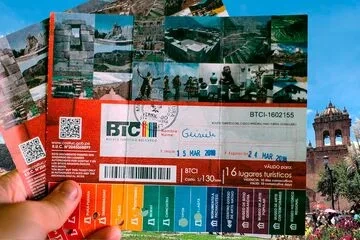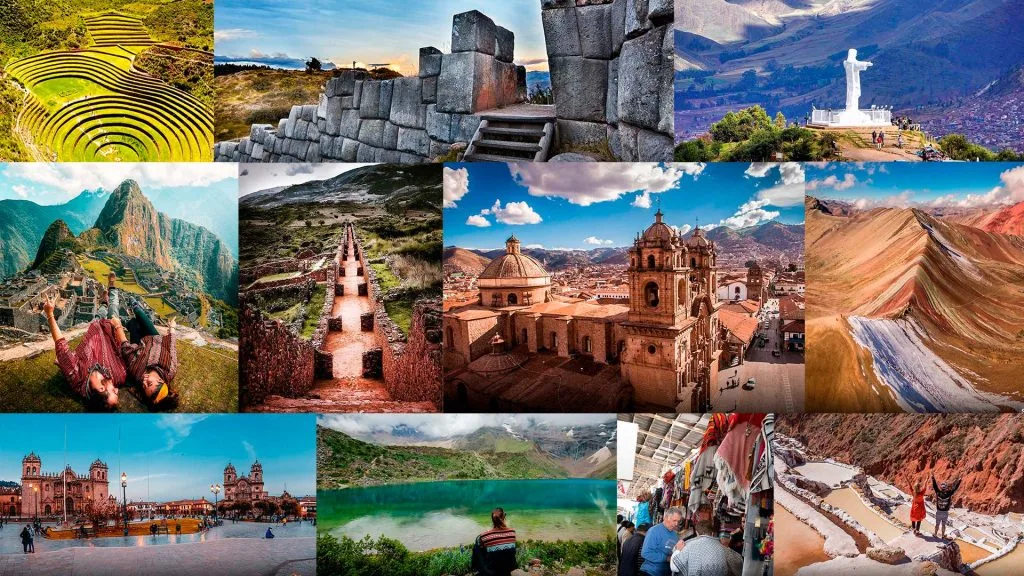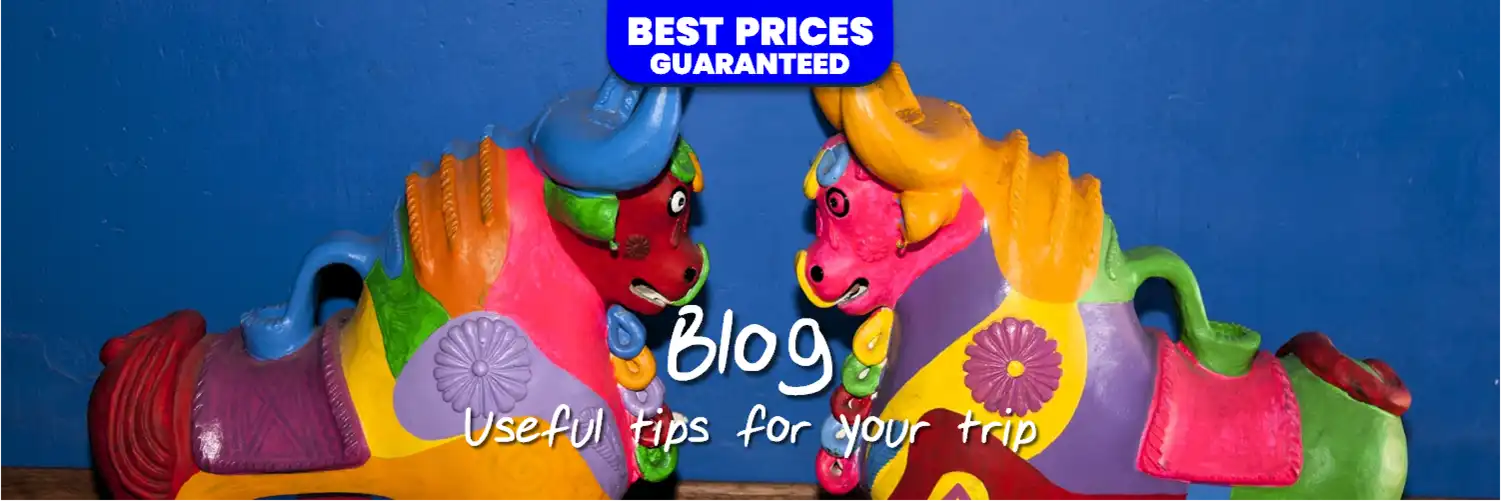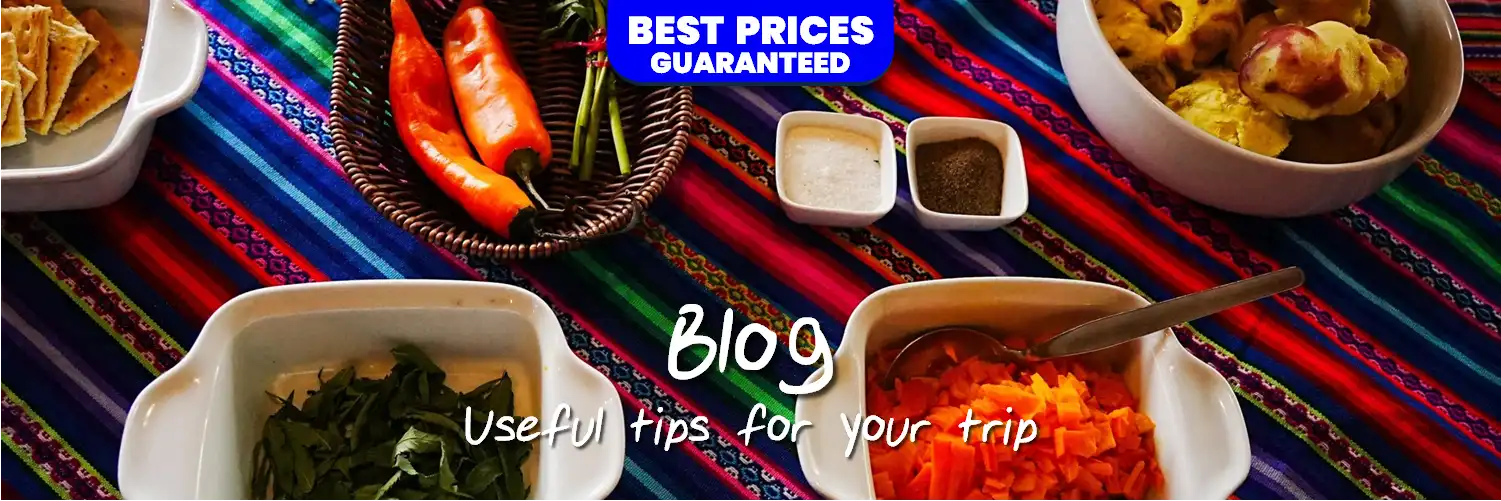Cusco Tourist Ticket 2025: Prices, Circuits & Backpacker Guide

Introduction
If you’re heading to Cusco, chances are you’ve already dreamed of Machu Picchu. But before you set out for the Inca citadel, there’s another key item every traveler should know about — the Cusco Tourist Ticket, or Boleto Turístico del Cusco (BTC).
Managed by COSITUC (the Committee of Integrated Cultural Tourism Services of Cusco), this pass gives you access to most of the region’s archaeological sites, museums, and cultural centers. For backpackers and budget travelers, it’s the smartest way to see more for less — a single ticket that unlocks the heart of the Inca world.
This practical 2025 guide breaks down prices, circuits, schedules, purchase points, and insider tips to make the most of your stay in Cusco and the Sacred Valley.
Beyond convenience, the ticket supports local conservation: a percentage of every purchase funds the maintenance and restoration of archaeological sites across the region.
1. What Is the Cusco Tourist Ticket (BTC)?
The Boleto Turístico del Cusco is an official pass that grants entry to 16 archaeological sites, museums, and cultural centers managed by COSITUC.
Instead of paying entrance fees separately, travelers can use this one pass for the major attractions across the city and the Sacred Valley.
There are four main versions of the Cusco Tourist Ticket:
Integral Ticket (BTCI) – Valid for 10 days; includes all 16 attractions.
Partial Ticket I – Valid for 1 day; covers sites around the city of Cusco.
Partial Ticket II – Valid for 2 days; covers the South Valley and museums.
Partial Ticket III – Valid for 2 days; focused on the Sacred Valley.
Each ticket is personal and non-transferable, valid for one entry per site, and does not include transportation or tour guides. Still, it offers one of the best value-for-money experiences in Peru.
2. Updated 2025 Prices
Official prices are determined by COSITUC (www.cosituc.gob.pe) and have remained stable since 2024, with small adjustments for student categories.
| Ticket Type | Validity | Foreign Visitor | Foreign Student (ISIC) | Peruvian Visitor | Peruvian Student |
|---|---|---|---|---|---|
| Integral Ticket (BTCI) | 10 days | S/ 130 | S/ 70 | S/ 70 | S/ 40 |
| Partial I – Circuit 1 | 1 day | S/ 70 | S/ 40 | S/ 40 | S/ 20 |
| Partial II – Circuit 2 | 2 days | S/ 70 | S/ 40 | S/ 40 | S/ 20 |
| Partial III – Circuit 3 | 2 days | S/ 70 | S/ 40 | S/ 40 | S/ 20 |
Useful notes:
Children under 9 enter for free when accompanied by an adult.
Students must present a valid ISIC card or university ID.
The ticket is non-refundable and non-transferable.
Machu Picchu and the Rainbow Mountain are not included; they require separate tickets.
Prices can vary slightly, so confirm before traveling.
3. Where to Buy the Cusco Tourist Ticket
As of 2025, the ticket is not sold online officially. You can purchase it in person at:
COSITUC Main Office – Av. El Sol 103, Tourist Galleries, Cusco. Open daily from 7:30 AM to 6:00 PM.
DIRCETUR Tourist Office – Calle Mantas 117, Historic Center.
At major archaeological sites – Including Sacsayhuamán, Pisac, Ollantaytambo, and Chinchero.
Payments are usually in cash (Peruvian soles). Some offices accept credit cards, but it’s best to bring cash just in case.
Keep your ticket safe — it’s stamped each time you enter a new site.
4. What Each Circuit Includes
The ticket covers 16 attractions divided into three circuits, each designed around location and theme. Opening hours are generally 8:00 AM – 5:00 PM, with slight variations by site or season.
Circuit I – Archaeological Park of Cusco (1 day)
Perfect for travelers short on time who want to explore the main ruins near the city.
Sacsayhuamán: a massive fortress of perfectly cut stones overlooking Cusco.
Q’enqo: a ceremonial center carved directly into rock.
Puka Pukara: an ancient military post and lookout point.
Tambomachay: known as “The Inca’s Bath” for its intricate stone canals and fountains.
Recommended duration: half-day to a full day, walking or by taxi.
Circuit II – South Valley & Museums (2 days)
A great option for travelers who love culture, history, and variety.
Includes:
Tipón – advanced Inca hydraulic engineering site.
Pikillaqta – remains of the pre-Inca Wari civilization.
Museum of Contemporary Art.
Regional Historical Museum (Garcilaso House).
Museum of Popular Art.
Qorikancha Site Museum.
Pachacútec Monument.
Qosqo Center of Native Art, where you can enjoy live Andean dance performances nightly.
Suggested duration: two full days for a balanced mix of archaeology and culture.
Circuit III – Sacred Valley of the Incas (2 days)
The most popular route among backpackers — connecting breathtaking landscapes with local markets and ancient ruins.
Includes:
Pisac: iconic terraces and artisan market.
Ollantaytambo: a living Inca town and gateway to Machu Picchu.
Chinchero: famous for traditional weaving and highland views.
Moray: circular terraces believed to be an agricultural laboratory.
Recommended time: at least two days; staying overnight in the Sacred Valley is ideal.
5. Visiting Hours and Timing Tips
Most archaeological sites and museums included in the Cusco Tourist Ticket are open daily from 8:00 AM to 5:00 or 6:00 PM.
Some museums may close briefly at midday or on national holidays, so always confirm locally before heading out.
General schedule guidelines:
Sacsayhuamán, Pisac, Ollantaytambo, and Moray close around 5:30 PM.
Museums and cultural centers usually close by 5:00 PM.
COSITUC’s main office operates 7:30 AM to 6:00 PM, every day.
If you’ve bought the 10-day ticket, pace your visits. Spend the first two days exploring sites near Cusco, then move to the South Valley, and finish with the Sacred Valley circuit.
6. Practical Tips for Backpackers
Traveling with the Cusco Tourist Ticket is easy — but a few insider tricks can make it even smoother.
Start slow and acclimate
Cusco sits at 3,400 meters (11,000 ft). On your first days, visit museums and nearby ruins that don’t require long hikes, like Qorikancha or Sacsayhuamán. Save the Sacred Valley for later, once you’ve adjusted to the altitude.
Plan your routes wisely
A sample itinerary for efficient travel:
Day 1: Sacsayhuamán, Q’enqo, Puka Pukara, Tambomachay.
Day 2: Museums, Tipón, and Pikillaqta.
Day 3–4: Sacred Valley – Pisac, Moray, Ollantaytambo, Chinchero.
Group sites by area to avoid unnecessary backtracking or long transport times.
Use local transportation
Sacred Valley buses depart from Cusco’s Pavitos terminal; fares range from S/ 8–12 per leg.
For Sacsayhuamán or Tambomachay, you can join a City Tour (S/ 30–50) or take shared taxis (colectivos).
Tours are convenient but optional — independent travelers can easily visit all sites with a little planning.
Carry cash and ID
Some archaeological sites lack reliable card machines. Bring small Peruvian soles and keep your passport or ISIC card handy.
Keep your ticket safe
You’ll need to present and stamp it at each site. Avoid folding or getting it wet — replacements aren’t issued.
Download free maps
Pariwana offers Free Tourist Maps of Cusco and the Sacred Valley (PDF). They show the BTC circuits, transport routes, and local recommendations for restaurants and viewpoints.
Stay central and social
For backpackers on a budget, Pariwana Hostel Cusco is a great base.
Located just steps from the Plaza de Armas, it offers secure lockers, daily activities, and a social atmosphere — perfect for swapping travel tips or joining group tours.
From Pariwana, you can easily reach the COSITUC office, bus terminals, and several BTC sites on foot.
7. What’s Not Included in the Cusco Tourist Ticket
A common misunderstanding is assuming the BTC covers all of Cusco’s attractions — it doesn’t.
The following require separate tickets or local payments:
Machu Picchu: Managed separately by the Ministry of Culture (machupicchu.gob.pe).
Rainbow Mountain (Vinicunca): Independent community-managed entrance, around S/ 20.
Maras Salt Mines: Community-administered, S/ 10 at the gate.
Qorikancha Temple of the Sun: Different from the Qorikancha Site Museum; entry is S/ 20.
Even so, the BTC covers most of the region’s highlights, making it an essential purchase for any serious traveler.
8. Reliable External References
For up-to-date information and official resources, check:
These sites offer the latest updates on prices, schedules, and cultural events — perfect for travelers planning ahead.
9. Final Tips to Make the Most of Your Cusco Tourist Ticket
1. Buy the ticket as soon as you arrive
The COSITUC office on Av. El Sol is only a short walk from the Plaza de Armas. Staff can confirm current opening times and inform you about any temporary closures. Starting early in your stay helps you plan your route efficiently.
2. Group attractions by area
Don’t rush across the Sacred Valley in one day. Plan your visits by proximity — for example, dedicate one day to the Cusco ruins, another to the South Valley, and one or two to the Sacred Valley. Using Google Maps or Pariwana’s free maps helps you plot the most logical routes.
3. Go early
The best light and quietest hours are between 7:30 and 9:30 AM. Getting an early start not only beats the crowds but also offers better photo conditions in sites like Pisac or Sacsayhuamán.
4. Stay hydrated and protect yourself from the sun
At over 3,000 meters above sea level, Cusco’s sun can be surprisingly strong. Always carry a reusable water bottle and sunscreen.
5. Dress in layers
Weather in the Andes changes rapidly — mornings can be chilly, and afternoons warm. Layered clothing keeps you comfortable throughout the day.
6. Balance exploration and downtime
After full days exploring ruins and museums, take an evening off to relax or join a hostel event. The Pariwana Blog – Travel Guides & Hostel Hacks features weekly updates on local festivals, events, and backpacker stories — great for mixing culture with social life.
10. Frequently Asked Questions (FAQ)
Where can I buy the Cusco Tourist Ticket?
At the COSITUC Main Office (Av. El Sol 103) or at ticket booths in Sacsayhuamán, Pisac, Ollantaytambo, and Chinchero. There’s no official online sale.
How much does the 2025 Tourist Ticket cost?
Foreign visitors: S/ 130 (integral) or S/ 70 (partial)
Foreign students: S/ 70 (integral) or S/ 40 (partial)
Peruvian visitors: S/ 70 (integral) or S/ 40 (partial)
Peruvian students: S/ 40 (integral) or S/ 20 (partial)
What attractions are included?
Sixteen in total — Sacsayhuamán, Q’enqo, Puka Pukara, Tambomachay, Tipón, Pikillaqta, Pisac, Ollantaytambo, Chinchero, Moray, and several museums: the Museum of Contemporary Art, Regional Historical Museum, Museum of Popular Art, Qorikancha Site Museum, Pachacútec Monument, and Qosqo Center of Native Art.
How long is the ticket valid?
Integral Ticket: 10 days
Partial Tickets: 1 or 2 days, depending on the circuit
Does it include Machu Picchu?
No. Machu Picchu has its own separate ticket issued by the Ministry of Culture (machupicchu.gob.pe).
Can I pay with a credit card?
Sometimes, but not everywhere. Always bring cash in soles to avoid issues.
What happens if I lose the ticket?
Lost or damaged tickets cannot be replaced or refunded. Keep it safe and dry.
Do I need a guide?
No, but hiring one at key sites like Sacsayhuamán or Tipón can enrich the experience — local guides charge reasonable fees and often provide fascinating context.
Which circuit is best for backpackers?
Circuit III (Sacred Valley) is the favorite among young travelers — a mix of scenery, history, and living culture.
11. Why the Cusco Tourist Ticket Is Worth It
The Cusco Tourist Ticket isn’t just an entry pass — it’s a passport to the living legacy of the Inca Empire.
For the price of a single dinner back home, you gain ten days of access to some of the most spectacular sites in South America.
For backpackers, the BTC offers unbeatable value. You’ll explore ancient fortresses, local markets, and vibrant communities — all while supporting the preservation of Peru’s cultural heritage.
To make your trip easier, base yourself at Pariwana Hostel Cusco.
Its central location near the Plaza de Armas, comfortable dorms, and lively common areas make it a top pick among global travelers. From there, you can easily walk to the COSITUC office or catch buses to the Sacred Valley.
Before setting out, grab the Free Tourist Maps of Cusco and the Sacred Valley for offline navigation and local travel tips.
And if you want inspiration beyond the ruins, the Pariwana Blog is packed with insider stories and hacks from fellow travelers.
✍️ Pariwana Editorial Team
Practical travel tips written by backpackers, for backpackers.

A complete guide for backpackers: culture, food, nightlife, and outdoor adventures in Cusco.


